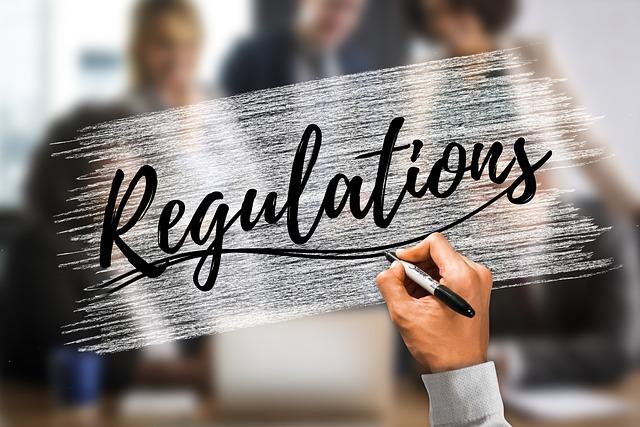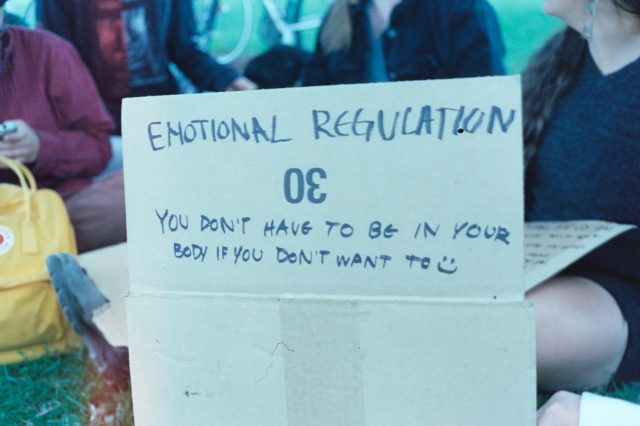In the hustle and bustle of daily life, it’s easy to feel overwhelmed by a whirlwind of emotions. Whether it’s the frustration of a traffic jam, the anxiety before a big presentation, or the sadness that lingers from a personal disappointment, our emotional responses can significantly impact our day. Understanding how to manage these emotions is not just a skill but a crucial part of maintaining mental well-being. In this article, we will explore some of the best emotional regulation tips to help you navigate the ups and downs of everyday situations with grace and resilience. With empathy and practicality, these strategies aim to empower you to take control of your emotional landscape, fostering a sense of calm and balance no matter what life throws your way.
Understanding Your Emotional Triggers and How to Manage Them
Identifying emotional triggers is a crucial step in cultivating self-awareness and fostering personal growth. Triggers can range from specific words or situations to certain behaviors of others that elicit a strong emotional reaction. Recognizing these triggers can help you manage your responses more effectively. Here are some strategies to help you on this journey:
- Pause and Reflect: When you feel triggered, take a moment to pause. Breathe deeply and allow yourself a few seconds to assess the situation. This brief pause can prevent impulsive reactions and give you time to choose a more measured response.
- Journal Your Feelings: Keeping a journal can be a powerful tool in understanding your emotional landscape. Write down situations that trigger strong emotions and reflect on why they affect you. Over time, this practice can help you uncover patterns and identify underlying issues.
- Develop Coping Strategies: Once you identify your triggers, brainstorm coping mechanisms that can help you manage them. This might include grounding techniques, such as focusing on your senses, or cognitive reframing, where you challenge negative thoughts and replace them with positive ones.
Below is a simple guide to help you categorize and understand your triggers:
| Trigger Type | Example | Possible Response |
|---|---|---|
| Environmental | Loud noises | Use noise-canceling headphones |
| Social | Criticism from peers | Practice positive self-talk |
| Emotional | Feeling ignored | Communicate your needs clearly |

Practicing Mindfulness to Stay Grounded in the Moment
In the hustle and bustle of daily life, staying grounded can be a challenge. Mindfulness is a powerful tool to help us connect with the present moment and navigate through life’s stresses with calm and clarity. Here are some practical tips to help you cultivate mindfulness in your everyday routine:
- Start with Your Breath: Take a few moments each day to focus on your breathing. Inhale deeply through your nose, hold for a few seconds, and exhale slowly. This simple act can help anchor you to the present and reduce anxiety.
- Body Scan: Perform a quick body scan from head to toe, paying attention to any tension or discomfort. Acknowledge these sensations without judgment and gently release them with each exhale.
- Mindful Eating: Engage all your senses while eating. Notice the texture, flavor, and aroma of your food. This practice not only enhances your meal experience but also helps prevent overeating.
| Situation | Mindfulness Tip |
|---|---|
| Stuck in Traffic | Use this time to practice deep breathing or listen to a calming podcast. |
| Overwhelmed at Work | Take a 5-minute break to stretch or walk outside for a breath of fresh air. |
| Family Dinner | Engage in active listening, giving full attention to each person speaking. |
Remember, mindfulness is a practice, not a destination. By integrating these simple yet effective strategies into your daily routine, you can enhance your emotional regulation, leading to a more balanced and peaceful life.

Building a Personal Toolkit for Emotional Resilience
In the fast-paced dance of daily life, emotional regulation can feel like an elusive skill. Yet, by , you can transform this challenge into an opportunity for growth and self-discovery. Here are some essential tips to guide you through the ups and downs with grace and poise.
- 4-7-8 Breathing: Inhale quietly through your nose for 4 seconds, hold the breath for 7 seconds, and exhale completely through your mouth for 8 seconds.
- Box Breathing: Inhale for 4 seconds, hold for 4 seconds, exhale for 4 seconds, and pause for 4 seconds before repeating.
| Emotion | Trigger | Response |
|---|---|---|
| Anger | Missed Deadline | Deep Breathing, Reassess Priorities |
| Anxiety | Upcoming Presentation | Mindful Visualization, Positive Affirmations |
| Sadness | Personal Conflict | Journaling, Reach Out to a Friend |

Effective Communication Strategies to Navigate Emotional Challenges
When facing emotional challenges, effective communication is key to maintaining healthy relationships and personal well-being. Here are some strategies to help you navigate these turbulent waters:
- Active Listening: Engage fully in conversations by paying attention to the speaker, acknowledging their feelings, and providing feedback. This not only helps in understanding the other person’s perspective but also fosters empathy.
- Use “I” Statements: Express your feelings and needs without blaming others. For example, say “I feel overwhelmed when…” instead of “You make me feel…” to reduce defensiveness and open a constructive dialogue.
- Practice Mindfulness: Being present in the moment can help you respond thoughtfully rather than react impulsively. Take deep breaths, and focus on the here and now to better manage your emotions.
| Situation | Communication Tip |
|---|---|
| Conflict at Work | Set clear boundaries and schedule a time to discuss the issue calmly. |
| Family Disagreement | Listen without interrupting and validate each other’s feelings. |
| Feeling Overwhelmed | Communicate your need for space and practice self-care. |
Incorporating these strategies into your daily interactions can transform how you experience and handle emotional challenges, leading to more positive outcomes and strengthened relationships.








































